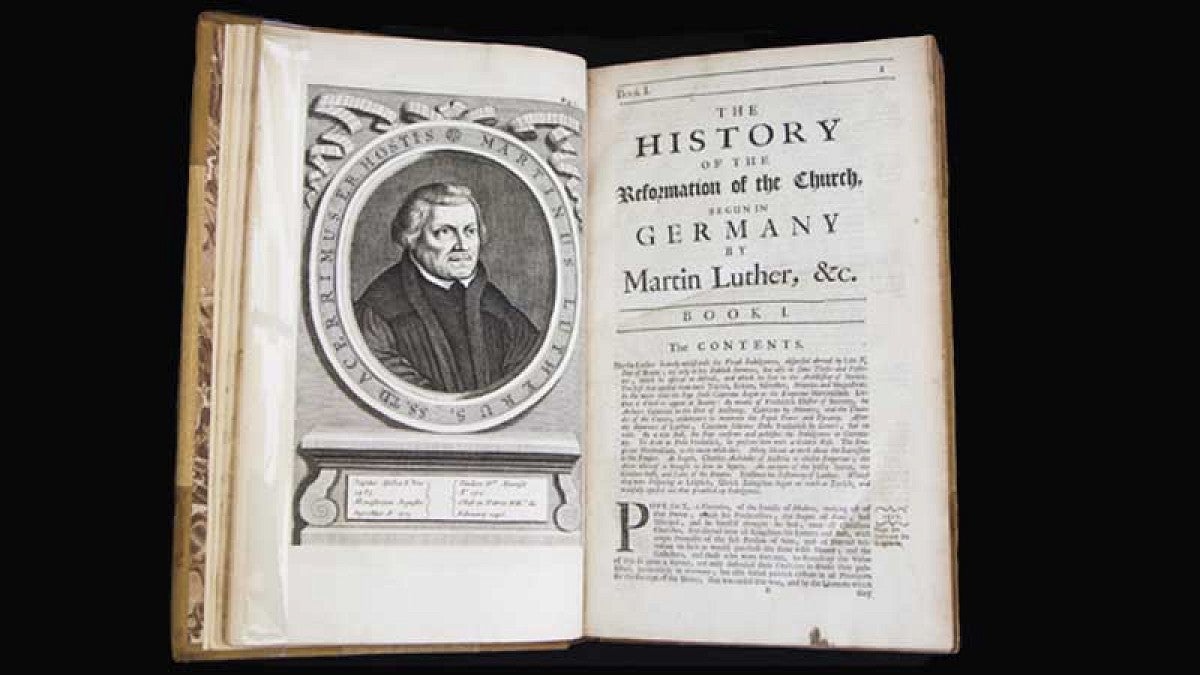An exhibit of rare books from UO Libraries’ special collections marks the 500th anniversary of the Reformation, one of modern history’s formative events
In the beginning was the Word.
This ancient article of faith, paradoxically enough, also serves as an apt descriptive salvo for the birth of the modern worldview. An ongoing exhibit co-sponsored by the University of Oregon Libraries’ Special Collections and University Archives and the Kellenberger Library of Northwest Christian University illuminates multiple perspectives on Reformation history and thought through displays of authentic period materials from the universities' respective rare books collections.
Special Collections & University Archives Hours
“The explosion of book production between the 15th and 16th centuries was just astronomical,” said Special Collections Librarian Bruce Tabb. “The UO Libraries is fortunate to have many of these primary sources in our permanent collections, everything from medieval manuscript codices to some of the earliest books mechanically printed with set type.”
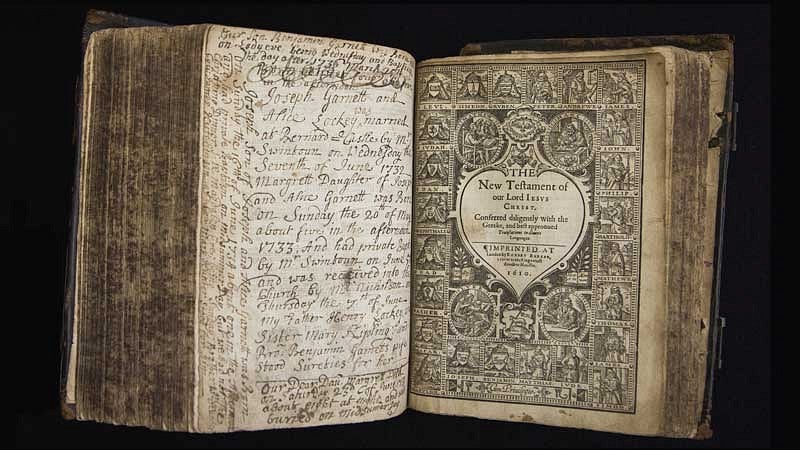
“The Bible: Translated According to the Ebrew and Greeke, and Conferred with the Best Translations in Divers Languages. With Most Profitable Annotations upon All the Hard Places, and Other Things of Great Importance, as May Appear in the Epistle to the Reader.” (London: Robert Barker: 1611).
From the Rare Book Collection, UO Libraries’ Special Collections and University Archives
As showcased in “Word Made Print: Reformation and the History of the Book,” the world’s first “media event” occurred when manuscripts handwritten in Latin and other dead languages gave way to books printed on mechanical presses, with type set in the vernacular languages spoken by the common peoples of the time.
The first seeds of modernism were planted 500 years ago this autumn, when a scholar-priest living in Saxony published his lengthy list of criticisms against the Catholic Church’s selling of indulgences. Today there is some doubt as to whether Martin Luther literally “nailed his 95 Theses to the church door” at Wittenberg on Oct. 31, 1517. What is beyond debate, however, is that his act of protest carried social and theological ramifications that quickly spread to every corner of Europe and continue to bear consequences down to the present day.
![Privilegia et documenta ad monasterium S. Zenonius Maiorii Veronae (Privileges of the Verona Monastery). [16th century]. [Latin]. Privilegia et documenta ad monasterium S. Zenonius Maiorii Veronae (Privileges of the Verona Monastery). [16th century]. [Latin].](/sites/default/files/styles/custom_xl/public/edited-privilegia-et-documenta-ad-monasterium.jpg?itok=_JcYgI13)
“Privilegia et documenta ad monasterium S. Zenonius Maiorii Veronae” (Privileges of the Verona Monastery). [16th century]. [Latin].
From the Burgess Manuscript Collection, UO Libraries’ Special Collections and University Archives
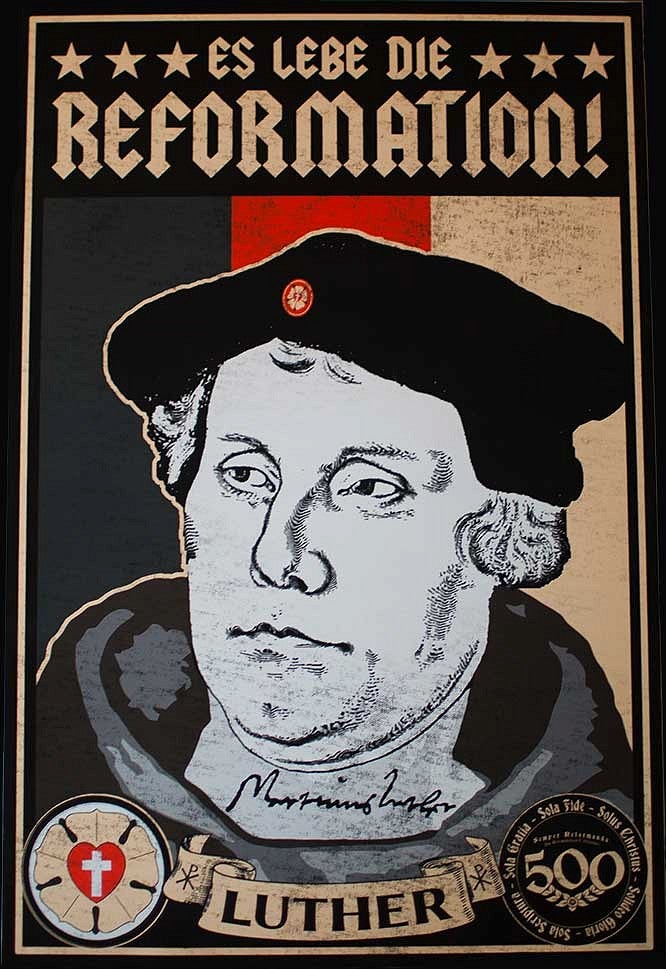
“Few historical events have touched so many lives around the world, whether Christian or not,” said UO professor of history David Luebke, one of the exhibit’s organizers. “Together, Reformation and print generated a revolution in communication and accelerated the unprecedented transformation of Christianity into the first globe-spanning religion.”
The Protestant Reformation began as an attempt to reform the church by priests who opposed what they perceived as false doctrines and systematic corruption. In addition to the theological factors, however, the roots of the Reformation were intertwined with the advent of humanism, nationalism, nonconformist education and the Renaissance spirit of skepticism before tradition.
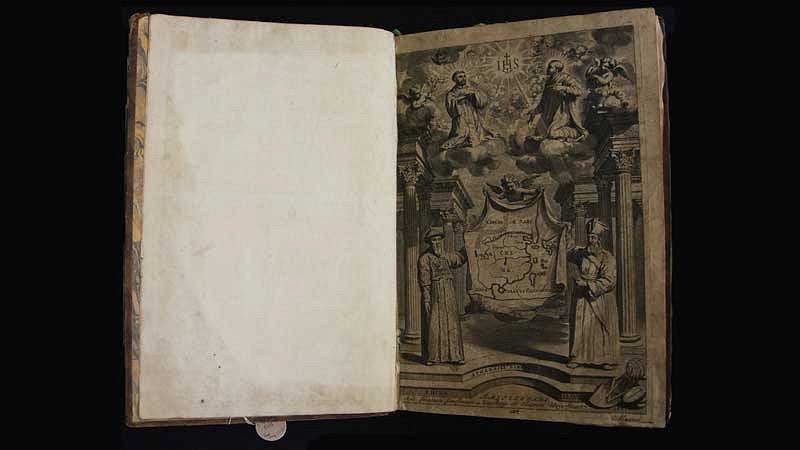
Kircher, Athanasius. “Athanasii Kircheri E Soc. Jesu China Monumentis, Qvà Sacris Quà Profanis : Nec Non Variis Naturæ & Artis Spectaculis, Aliarumque Rerum Memorabilium Argumentis Illustrata, Auspiciis Leopoldi Primi Roman.” (Amstelodami: Apud Joannem Janssonium À Waesberge & Elizeum Weyerstraet, 1667). Warner Collection 951 K632 C
From the Gertrude Bass Warner Collection, UO Libraries’ Special Collections and University Archives
Technological innovation played a vital role as well. With the invention and rapid spread of Johannes Gutenberg’s printing press, the means to broadly disseminate written materials existed for the first time. Reformers embraced the new technology, producing inexpensive pamphlets, religious tracts and Scriptures translated into the vernacular European languages.
New uses, forms and aesthetics of the printed word quickly developed, varying across the different Christian churches that were emerging. Consequently, the Reformation would play a decisive role in the promotion of literacy and the expansion of Christianity as a world religion.
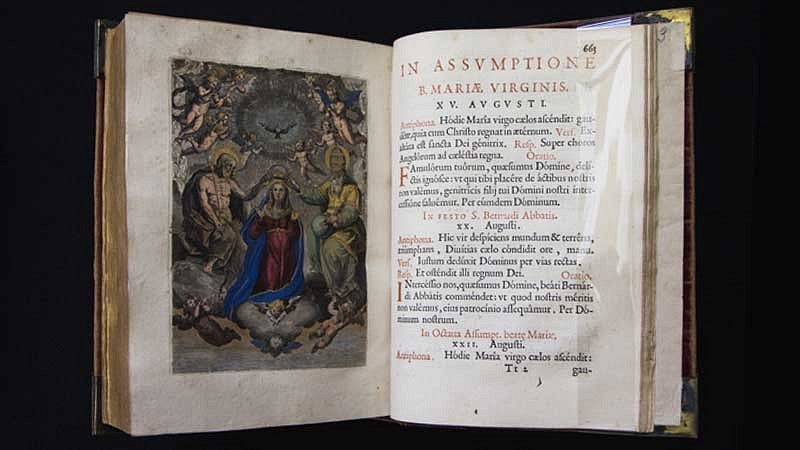
Catholic Church. “Officium Beatae Mariae Virginis, Pii V. Pont. Max. Iussu Editum.” (Antuerpiae: s.n., 1609). RBC BX 2080.A2 1609
From the Rare Book Collection, UO Libraries’ Special Collections and University Archives
“It’s a really interesting idea to consider a sociocultural event like the Reformation in parallel to the technological transformation in book production that occurred at around the same time period,” Tabb said. “The result is a fascinating exhibit that is both academically rigorous and visually appealing.”
—By Jason Stone, UO Libraries; Photography by Justin Jeffers; Photo Captions from the exhibit text by David Luebke, Department of History and Vera Keller, Robert D. Clark Honors College
Curated by Vera Keller, David Luebke, Steve Silver and David de Lorenzo, “Word Made Print” is a collaborative effort between the University of Oregon and Northwest Christian University, the UO Libraries’ Special Collections and University Archives, and NCU’s Edward P. Kellenberger Library. Be sure to visit NCU’s portion of “Word Made Print,” on display in the Kellenberger Library until Dec. 15.


